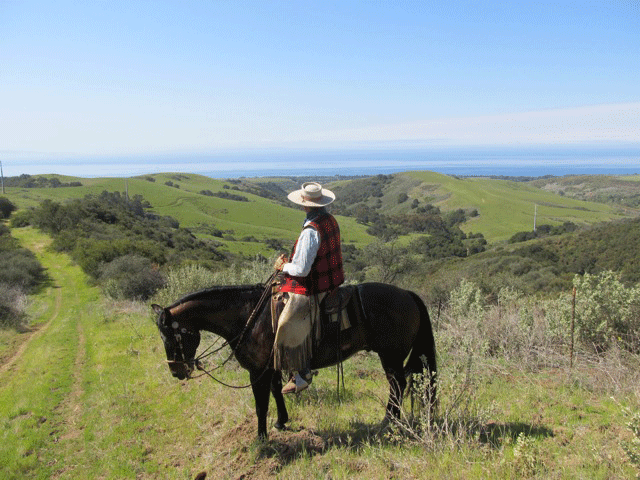Jaquima to Freno
I prefer to start a horse in the hackamore because it is mechanically consistent to where I want to go with my horses: happily effective one-handed in the bridle. It makes sense to protect the sensitive mouth of the horse as it becomes used to a rider and learns where to put its feet to be effective in the bridle.
I would not bridle a horse when its mouth is in transition and changing, think how fussy a child can get when it is teething.
““I hear all the time that people think they need to have really good hands or be an expert rider to use a spade bit. On the contrary, a spade bit will do much less damage and cause the horse much less pain than any other mouthpiece with the same amount of leverage.””
I do not confuse a horse by teaching with tools that don’t work on the same mechanical principles of my end goal = a spade bit bridle horse. A horse should not have too many different feels to sort out.
A horse will become accustomed to whatever bit they are first introduce to at about the same rate of time no matter what type of bit or mouthpiece with exception of a spade bit. Spades will take a little longer because the bit’s balance and configuration give it more to say than any other bit, whether it's being handled or not. For these reasons I follow the early California method of waiting until the horse is familiar with the rider and working well with confidence in itself and it's rider before we introduce them to something in their mouths. If we start with what we want to ride them with we only have to go through the bitting process once.
Even though they understand how to carry themselves in the correct balance to use their feet and to carry the bridle and work in the perimeters of the mechanical boundaries of the bridle it is a more ridged structure than the hackamore or snaffle so it takes a certain amount of time for the horse to get comfortable with this change, regardless of what method is used.
It has been said a horse started in the hackamore might take longer to introduce them to the bridle as the first bit in their mouth. I’ve found this not true in most cases. It depends on the horse and how well is has been prepared and the skill and understanding of the person doing the bridling.
I hear all the time that people think they need to have really good hands or be an expert rider to use a spade bit. On the contrary, a spade bit will do much less damage and cause the horse much less pain than any other mouthpiece with the same amount of leverage. The only way a spade will be severe is if the rider takes a rein in each and plow reins it. A spade is a one handed bridle.
I made this statement on the pure mechanics of a spade bit. Any bit that has a bigger mouthpiece to distribute the pressure of the lever over a larger surface will be less severe than a bit that puts pressure on a smaller area.
As you can see in the picture if you pull on one rein hard and outside of the area of your body the top of the spoon will dig into the gums. That is why when horses go into the bridle it's best to two-rein them so if needed you can pull them with that.
It goes without saying the better your hands and seat are the better your horses will be, but that's true with any bit.
Bottom line is if you aspire to be a spade bit bridle horse person the only way to really to do this is to use the tools you want to master.
The spade works a little different than most bits so you have to use a spade to figure out how it works. Think of it this way if you wanted to play guitar would you practice on the fiddle?
The snaffle, while an effective tool, has a few drawbacks that are not consistent to quality one handed riding. It has no solid neutral position and it does not work well one handed for any length of time without support from the other hand.
It is designed to be worked with the reins at least as wide as the rings are set or at least 5 inches apart. This makes sense with any tool where the reins come out of the sides and not the bottom: they are built to pull sideways, not up and down.


